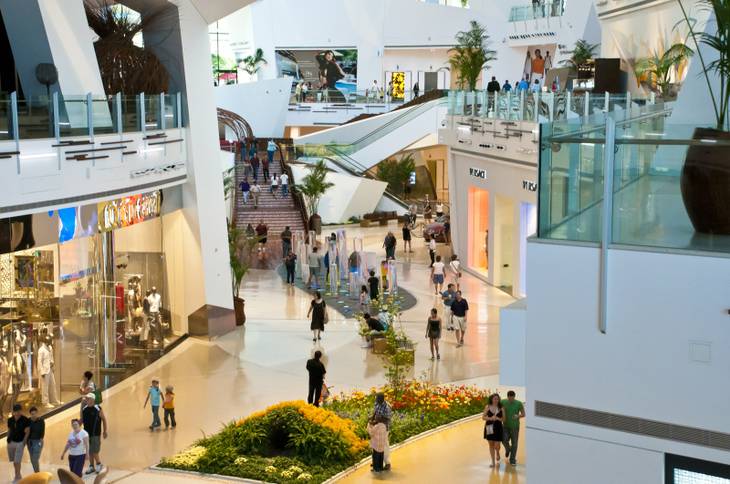The recovery for Las Vegas’ retail real estate market appears to be short lived.
Colliers International Las Vegas reported the vacancy rate rose during the second quarter and the retail market is tailing off after showing some improvement in 2010.
Colliers had a more optimistic assessment about the office and industrial sectors, which appear to be stabilizing. The firm said the retail vacancy rate was 12.1 percent at the end of June, up from 11.5 percent at the end of the first quarter.
This marks the second consecutive quarter that more space has been vacated than occupied, said Colliers Research Director John Stater. Rental rates have continued to slide, falling to $1.48 per square foot per month, a 10 percent decline from a year ago, he said. That’s based on a triple net lease in which the tenant pays for rent, taxes, insurance and maintenance.
Retail sales are up this year and retail employment has remained stable at 91,000 jobs between May 2010 and May 2011, Stater said.
“Given the continued struggles of the commercial real estate market, it seems likely that a good portion of the employment increases we’re seeing in retail are occurring on the Las Vegas Strip and not in the suburban shopping centers,” Stater said.
Although the retail numbers appear grim, Stater said there should be some improvement as casinos add jobs.
“The retail market should be the first sector of the local commercial real estate market to feel the effects,” Stater said. “This is because more jobs means more spendable income, and that spending is going to take place in the valley’s retail centers.”
The biggest problem to overcome is the vacancy in large anchor stores that can only be solved by large national and regional chains moving here, he said.
Southern Nevada had 85 retail units available that were 10,000 square feet or larger, an increase of 22 spaces over the first quarter or 457,000 square feet.
OFFICE MARKET
Colliers reported that the office vacancy rate fell to 24.5 percent in the second quarter, down from 24.6 percent. The vacancy rate has risen only 0.7 points during the past year, which suggests it has stabilized, Stater said.
The rental rates requested by landlords fell 5 cents to $2 per square foot on a full service gross in which the tenants pays for maintenance, utilities and other expenses has a ways to go before it hits bottom, Stater said.
Between May 2010 and May 2011, a net of 4,100 jobs were created in sectors associated with office space, Stater said.
High-end Class A office space had the highest vacancy rate at 33.1 percent, Stater said. Class B had a 21.8 percent vacancy rate and Class C had a 24.2 percent vacancy rate.
Stater said Class A space is hurting because that space relies on finance, insurance, real estate companies and law firms—sectors suffering the most.
Downtown had the lowest vacancy rate at 13.4 percent, while the northwest had the highest vacancy rate at 27.8 percent. The southwest had a high vacancy rate at 27.5 percent. The area near McCarran had a 26.9 percent vacancy rate.
National companies made up 30 percent of the tenants taking space and 40 percent of the office space taken in 2011, Stater said. California companies have stepped up their presence since the first quarter but fewer are coming here than in 2010, he said.
INDUSTRIAL MARKET
The vacancy rate fell from 15.7 percent in the first quarter to 15.5 percent in the second quarter. The market’s decline appears to be over even though 11,700 jobs were shed last year, Stater said.
The northwest valley had the highest vacancy rate at 35.9 percent, while the west central area of Las Vegas had a 10.5 percent vacancy rate.
The vacancy rate decreased in the southwest valley and North Las Vegas. Improvement in the gaming industry should help the industry improve, Stater said.
The vacancy rate for warehouse and distribution space fell 1.1 points in the second quarter, he said.
Companies headquartered outside of Nevada took 53 percent of the space leased or sold so far in 2011, down from 66 percent in 2010. So far, 45 percent of the leases signed in 2011 were with companies with a regional or national reach, down from 67 percent in 2010.
Rents requested by landlords fell to from 54 cents per square foot in the first quarter to 53 cents in the second quarter, Stater said.
